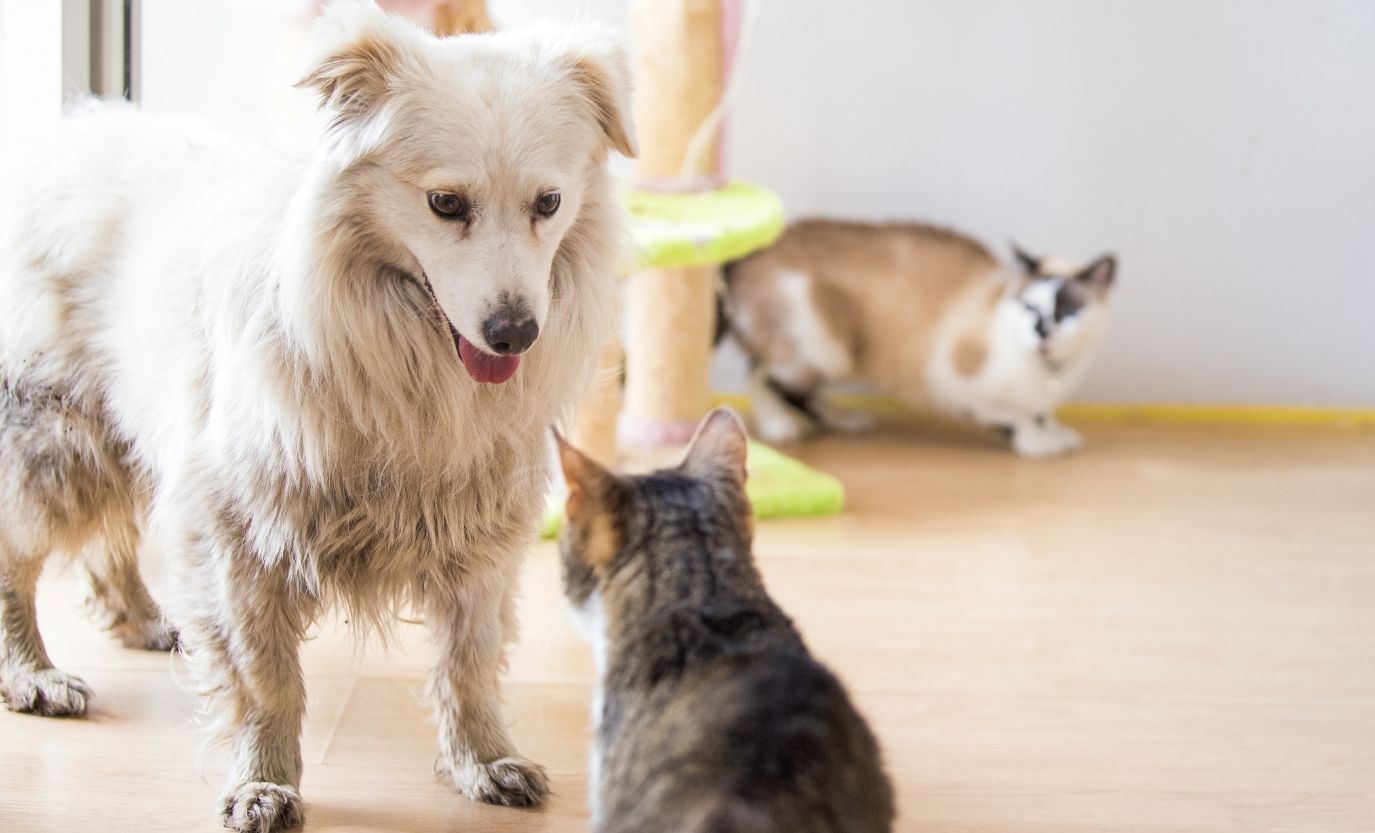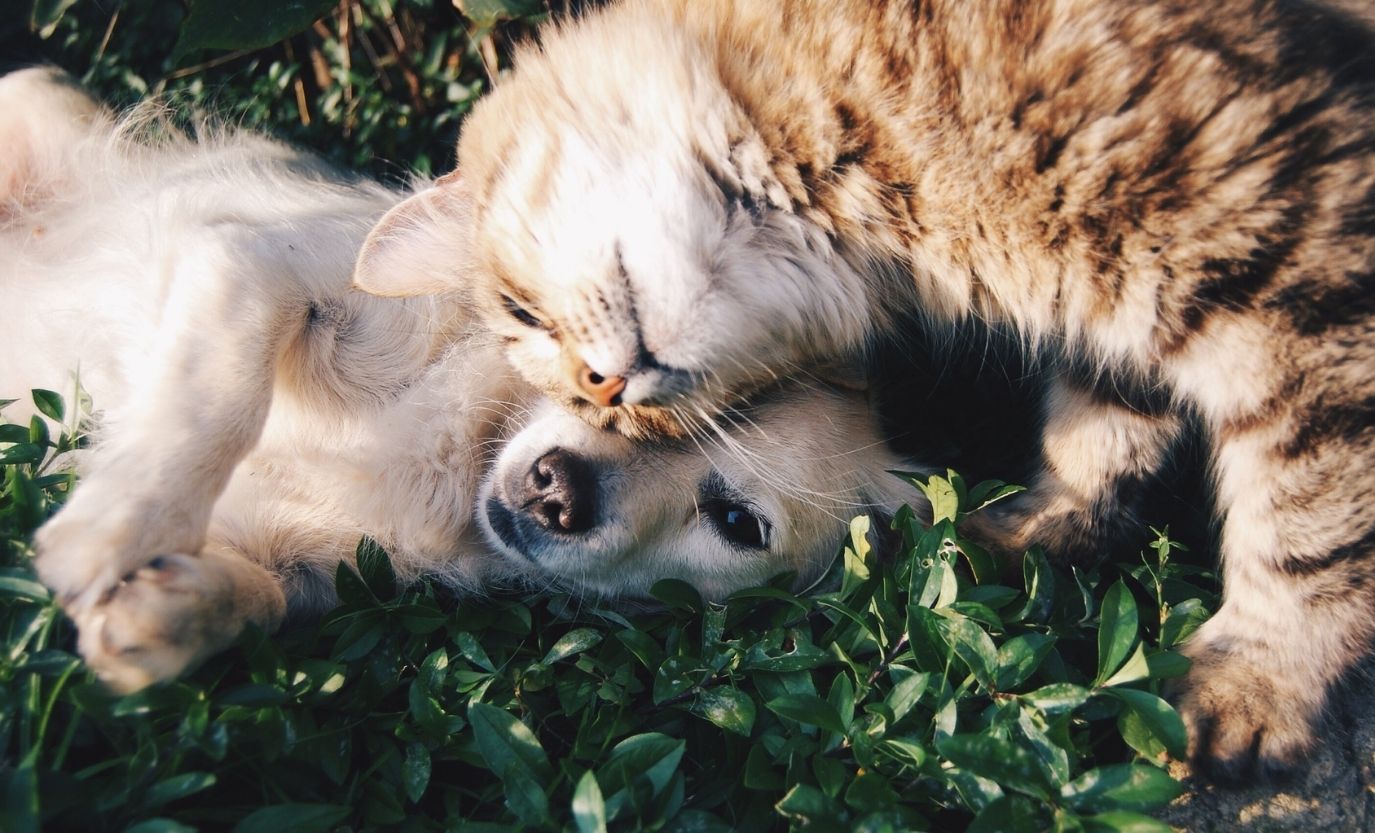Training a dog to live with a cat peacefully is doable—usually. Some dogs just have a high prey drive, and management is your main go-to, but you can often teach a dog to recognize the difference between inside pets and outside animals.
Here are the tools needed along with the steps that can help your dog get along with cats and other small animals within the home.
Tools needed:
- High-value treats, the best you’ve got. Pull out the tuna, the chicken liver, the peanut butter, whatever your dog loves more than life itself. This can often be food but doesn’t have to be. Use whatever currency your dog most values.
- A clicker or verbal marker – if you’ve got questions about how these work, feel free to ask. They’re very easy and take very little time to set up.
- A leash – preferably a long line, but a standard 6’ will do.
- The 3 most valuable things you will ever need in dog training: patience, repetition, and consistency.
Precautions for the cat:
Make sure the cat has places up high so they can escape or just get some respite, but I don’t suggest giving the cat enough room to bolt. That motion can trigger a prey instinct, so keep the cat calm. Take breaks before you see things getting out of hand. Small, good doses are better than longer doses that go bad.
Precautions for the dog:
Exercise first! Both physical and mental. You don’t want any excess energy aimed at the cat. The dog should be in a calm, friendly state of mind. If this is after a play session, give the dog time to wind down and switch gears so he doesn’t think cat time is more play time.

Procedure:
Start far away: Start all the way across the open layout of your house, just within range of sight; go as far as you can with whatever set-up you have.
Redirect: If your dog pulls the leash taut and stands at attention, redirect him. Do this every chance you get, offering toys, affection, new things to smell (sometimes just pulling random things off your desk or out of the trash for this), trick cues, anything that will grab his attention.
Block/break eye contact: Sometimes you’ll have to block eye contact with your body to get your dog to look at you, or just wait like a statue until they brake eye contact on their own, but every fraction of a second not focused on the cat is progress.
Mark: Mark for any bit of attention or activity directed at anything but the cat and reward heavily. Remember, instead of a verbal mark here, you can use a clicker if that’s your preference. More on verbal markers at the end.
Repeat: Here’s where the patience, repetition, and consistency come in: Gradually, the seconds of distraction should grow more frequent and last just a bit longer each time, and every reward in the right direction chips away at that prey behavior, like drops of water slowly but steadily breaking down a mountain. Gradually, your dog should start calming down at the sight of the cat and start focusing more on you. He should know that this exercise means you have great things for him, and begin to anticipate that.
Increase criteria: Once you get to a point where his attention is more focused on anything but the cat, you can start to move up a few feet, where you repeat the entire process again. Make baby steps across the room this way, closing the distance between the dog and the cat, depending on their attention and engagement.
Reduce criteria: Take steps back when they become frustrated or amped up, too, or just ended the session. Progress is not a straight line, and sometimes you’ll hit little plateaus, but keep at it. A mountain does not weather away in a week or even a month.
Smell: Exchange items that carry each animal’s scent and placing them in the other animal’s bed or favored sleep area. Pet your dog calmly throughout the day after just petting the cat so the smell of the cat is on your hands.

Summary: Distract the dog, reward the dog for looking away and engaging with you instead, rinse and repeat as you work your way slowly towards the cat at a pace the dog is comfortable with. Do this repeatedly.
Frequency: Keep sessions short, especially at first. Maybe 5-10 minutes. You might start shorter if need be; the goal is to stop before the dog goes over threshold, before he gets amped up and frustrated. Do maybe 1-2 sessions a day like this. Over time, extend sessions to about 10-20 minutes, then 30-60 minutes as you keep him tethered to you on the floor and distracted as you work on something else. The lie down or bed cue is helpful here; so are long-lasting chews/treat dispensers like frozen Kongs. Over time, sixty minutes will become an afternoon; an afternoon become a day.
Additional tips: You can also try keeping them separated when not training, preferably out of sight from each other. Make sure not to give your dog an opportunity to stare at the cat, especially while you’re not there to distract. Put a halt to any behavior you want to stop and do not let them practice it, such as sniffing and scratching at the door to the room they know the cat is in. In fact, you might start here instead of across the room, just getting them to leave the door alone.
If you have any questions or need any assistance with training, please don’t hesitate to contact me. I am here for you and your beloved canine.
Aaron Jones
Owner/Certified Dog Trainer
(832) 454-1684



